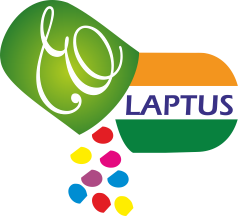Introduction: From Mathematical Foundations to Nature’s Designs in Visual Narratives
Building upon the foundational concept of Unlocking Complexity: From Mathematical Series to Modern Entertainment, it becomes evident that natural patterns serve as a bridge between abstract mathematics and compelling visual storytelling. These intricate designs, rooted in universal mathematical principles, have historically shaped our perception of beauty, harmony, and meaning in visual media. As modern creators seek authentic and resonant imagery, understanding the natural world’s complexity offers a rich palette for innovation and engagement.
Table of Contents
- The Mathematics Behind Nature’s Patterns: Foundations of Visual Inspiration
- Natural Patterns as Visual Language: Decoding Nature’s Storytelling Toolbox
- From Nature to Narrative: Crafting Visual Stories Through Pattern Recognition
- Technological Advances in Mimicking Natural Patterns
- Non-Obvious Dimensions: Cultural and Symbolic Significance of Natural Patterns
- Interdisciplinary Perspectives: Merging Science, Art, and Narrative
- Returning to Complexity: The Recursive Nature of Patterns in Storytelling
The Mathematics Behind Nature’s Patterns: Foundations of Visual Inspiration
Natural formations exhibit remarkable mathematical properties that have inspired artists and storytellers alike. The Fibonacci sequence, for example, appears in sunflower seed arrangements, pinecones, and shells, creating patterns that are both efficient and aesthetically pleasing. Similarly, fractals—complex, self-similar structures—manifest in coastlines, mountain ranges, and cloud formations, illustrating how simple recursive rules generate breathtaking complexity.
The golden ratio, approximately 1.618, has been revered for centuries for its aesthetic appeal. It governs proportions in the Parthenon, Renaissance art, and even modern graphic design. These mathematical principles underpin the visual harmony perceived in natural and man-made environments, providing a universal language that storytellers leverage to evoke familiarity and beauty.
| Mathematical Pattern | Natural Example | Visual Significance |
|---|---|---|
| Fibonacci Sequence | Sunflower seed arrangement | Creates spirals that optimize packing and growth |
| Fractals | Romanesco broccoli, coastlines | Generate infinite complexity from simple rules |
| Golden Ratio | Shells, galaxy spirals | Elicits natural aesthetic harmony |
Natural Patterns as Visual Language: Decoding Nature’s Storytelling Toolbox
Patterns such as spirals, tessellations, and branching structures serve as universal symbols with deep psychological and cultural meanings. For instance, spiral motifs symbolize growth, evolution, and continuity, evident in galaxies, whirlpools, and pinecones. Tessellations—repeating geometric shapes—are found in honeycombs and tiling art, representing order and harmony.
These motifs communicate complex ideas efficiently, making them powerful tools for visual storytelling. In contemporary media, designers incorporate natural patterns to evoke subconscious responses, enhance memorability, and encode cultural symbolism.
Case Studies
- The use of fractal-inspired visuals in digital art to evoke infinite complexity, as seen in works by digital artist Beeple.
- Tessellated patterns in branding, such as the iconic Honeycomb logo of Honeywell, emphasizing structure and reliability.
- Branching motifs in animation and game design, illustrating decision trees and narrative pathways.
From Nature to Narrative: Crafting Visual Stories Through Pattern Recognition
Translating natural patterns into compelling visual narratives involves understanding their inherent symbolism and applying techniques such as pattern analogy, abstraction, and motif integration. For example, a filmmaker might use spiral motifs to symbolize a character’s transformative journey, drawing inspiration from galaxy spirals or nautilus shells.
Psychologically, natural patterns activate innate cognitive responses, fostering feelings of familiarity and awe. Research indicates that exposure to fractal patterns can reduce stress and elevate mood, making them effective in immersive media experiences.
Modern visual storytellers harness these patterns to craft layers of meaning, enriching narratives with visual complexity that resonates on subconscious levels. An example is the use of branching structures in interactive media, guiding viewers through story pathways that mimic neural or botanical growth.
Technological Advances in Mimicking Natural Patterns
Recent breakthroughs in computational algorithms and AI enable the generation of hyper-realistic natural visuals. Algorithms such as Lindenmayer systems (L-systems) simulate plant growth, while deep learning models can produce fractal landscapes that adapt to narrative needs.
3D modeling and simulation tools now allow creators to craft immersive worlds rooted in real-world natural patterns. For instance, software like Houdini incorporates fractal noise functions to generate terrains that mimic mountain ranges or alien worlds, enhancing storytelling with authentic complexity.
“Technology bridges the gap between mathematical precision and artistic expression, enabling storytellers to craft worlds that feel both natural and fantastical.”
Non-Obvious Dimensions: Cultural and Symbolic Significance of Natural Patterns
Across cultures, natural motifs carry profound symbolism. Sacred geometry, such as the flower of life, appears in religious art and architecture, representing unity and eternity. In modern branding, patterns derived from nature—like the trefoil or spiral—are employed to evoke trust, vitality, and innovation.
Cultural context deepens the narrative potential of natural patterns. For example, the Maori Koru spiral symbolizes new beginnings and growth, enriching stories with layered meaning that resonates within specific cultural frameworks.
Interdisciplinary Perspectives: Merging Science, Art, and Narrative
Innovative visual storytelling benefits from collaboration across disciplines. Biologists provide insights into natural pattern formation; mathematicians develop algorithms to replicate these designs; artists and storytellers translate these into compelling narratives. For instance, bio-inspired architecture incorporates fractal principles to create buildings that blend seamlessly into their environments.
Future trends point toward immersive and interactive media, where science and art converge to produce experiences that are both educational and emotionally impactful. Projects like virtual reality ecosystems modeled on natural fractals exemplify this interdisciplinary synergy.
Returning to Complexity: The Recursive Nature of Patterns in Storytelling
The recursive essence of natural patterns mirrors the cyclical nature of storytelling itself. Just as fractals repeat at different scales, narratives often revisit themes, motifs, and symbols, creating a layered experience that reflects the inherent complexity of natural systems.
This recursive relationship fosters a deeper understanding of natural forms and enhances engagement, as audiences recognize familiar patterns embedded within new contexts. For example, the recurring motif of the spiral appears in mythologies, art, and modern media, symbolizing growth, evolution, and continuity.
In essence, embracing the recursive beauty of natural patterns allows storytellers to craft narratives that are both complex and accessible, echoing the ongoing dialogue between science, art, and human experience.


